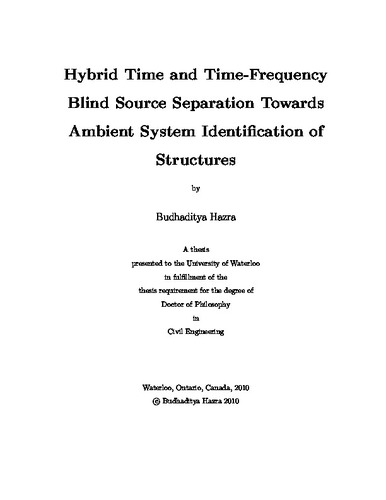| dc.description.abstract | Blind source separation methods such as independent component analysis (ICA) and second order blind identification (SOBI) have shown considerable potential in the area of ambient vibration system identification. The objective of these methods is to separate the modal responses, or sources, from the measured output responses, without the knowledge of excitation. Several frequency domain and time domain methods have been proposed and successfully implemented in the literature. Whereas frequency-domain methods pose several challenges typical of dealing with signals in the frequency-domain, popular time-domain methods such as NExT/ERA and SSI pose limitations in dealing with noise, low sensor density, modes having low energy content, or in dealing with systems having closely-spaced modes, such as those found in structures with passive energy dissipation devices, for example, tuned mass dampers.Motivated by these challenges, the current research focuses on developing methods to address the problem of separability of sources with low energy content, closely-spaced modes, and under-determined blind identification, that is, when the number of response measurements is less than the number of sources. These methods, requiring the time and frequency diversities of the measured outputs, are referred to as hybrid time and time-frequency source separation methods. The hybrid methods are classified into two categories. In the first one, the basic principles of modified SOBI are extended using the stationary wavelet transform (SWT) in order to improve the separability of sources, thereby improving the quality of identification. In the second category, empirical mode decomposition is employed to extract the intrinsic mode functions from measurements, followed by an estimation of the mode shape matrix using iterative and/or non iterative procedures within the framework of modified-SOBI. Both experimental and large-scale structural simulation results are included to demonstrate the applicability of these hybrid approaches to structural system identification problems. | en |

